Takhtshang Monastery, Bhutan
Almost a year ago I wrote about my arrival in the “Land of the Thunder Dragon”, Bhutan. My 2012 trip to Bhutan featured a visit to the world’s most incredible monastery, perched on a cliffside with no access from the valley floor except on foot.
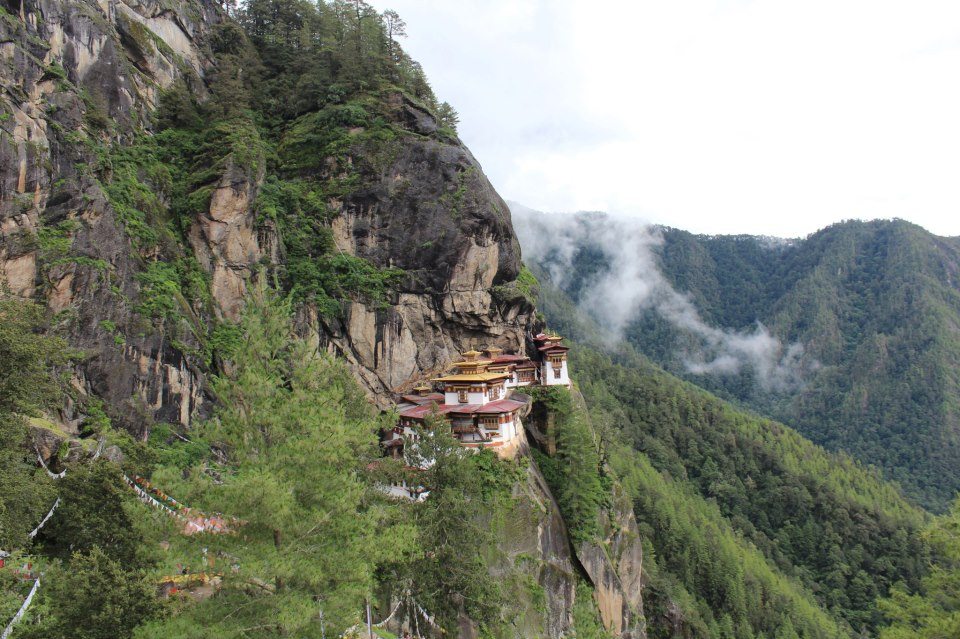
Taktshang Goemba (Tiger’s Nest Monastery)
We began driving up the mountain towards where Bhutan‘s most famous landmark is situated. After driving through a small forest glen, we pulled into a carpark and my guide turned to me. “We are currently at 2200m. Takhtshang Monastery is at 3100m. So we need to climb 900m. If you feel tired, or out of breath, tell me – you have just arrived here, and the altitude is very high”. And right he was! The first 500m was a snap, but
then I could feel my heart pounding and shortness of breath.
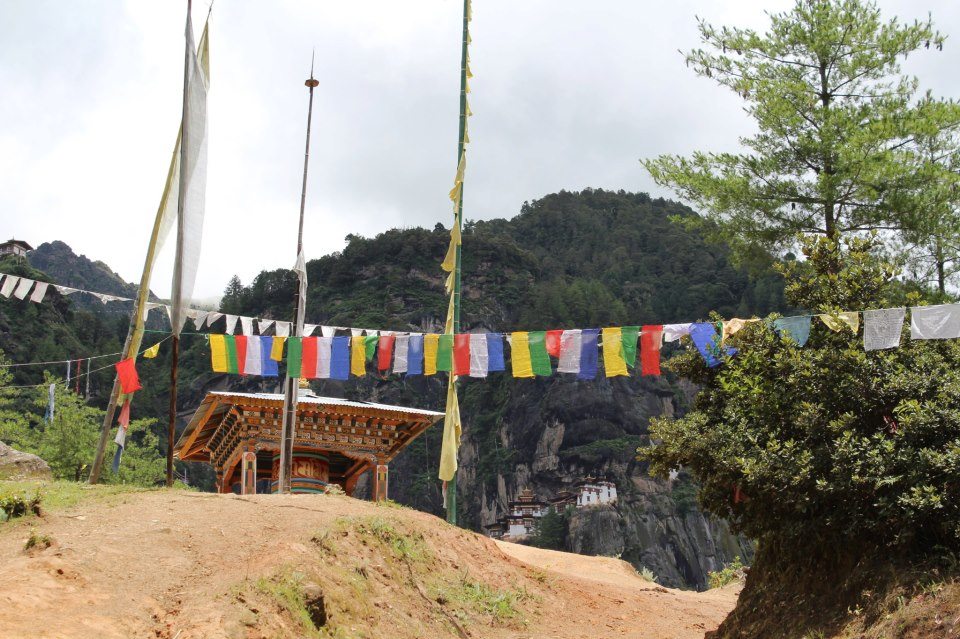
Taktshang Goemba (Tiger’s Nest Monastery) and prayer wheels
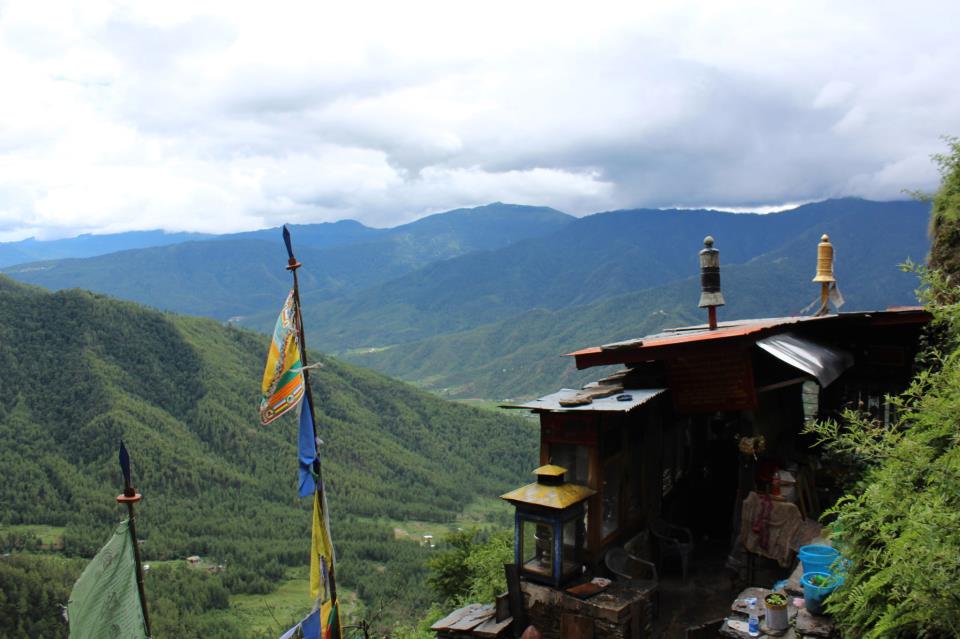
Paro Valley from Taktshang Goemba (Tiger’s Nest Monastery)
We stopped for lunch at a small cafeteria about halfway up, and a cup of tea provided me the recharge I needed to continue the climb. Back on the trail, and another 200m further brought us face to face with the monastery.
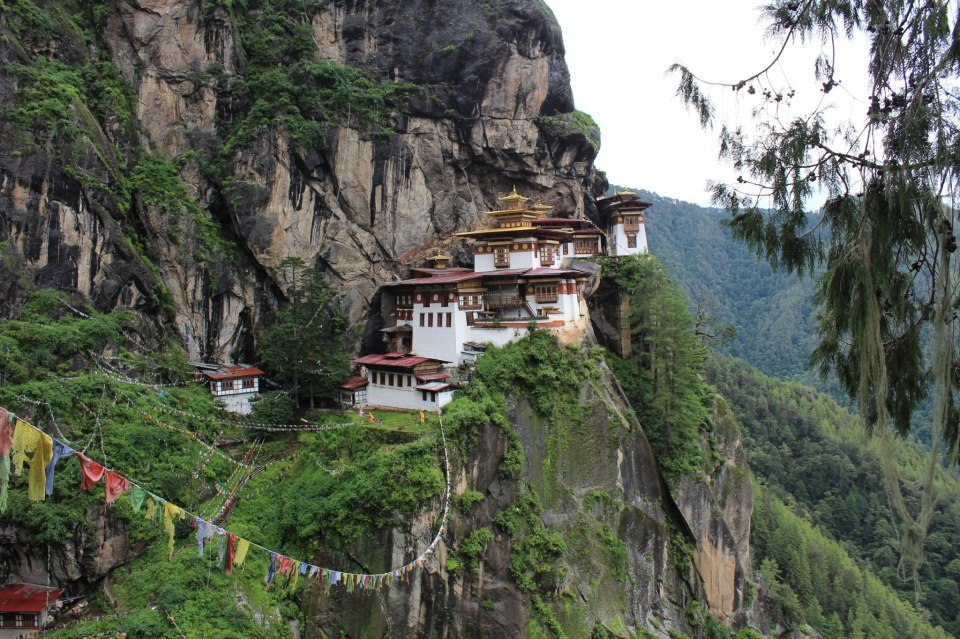
Taktshang Goemba (Tiger’s Nest Monastery)
An incredible feat of engineering, the monastery is hewn out of a cliff face overlooking the Paro valley 900m below. That’s almost one kilometre, straight down. The rustic features and the misty mountain side provide a spiritual experience like no other; isolated by geography, reaching Takhtshang is not just worth it, but special for its exclusivity. If the altitude hadn’t taken my breath away, the view certainly would have; we stopped at that view point for about ten minutes taking a million photos and absorbing it. The viewing point is across a vertical crevasse from the monastery, requiring us to walk down some steps then around the cliff edge to access it. Like a natural barrier, we passed a waterfall, the bridge plastered in prayer flags, before ascending again to the monastery’s level.
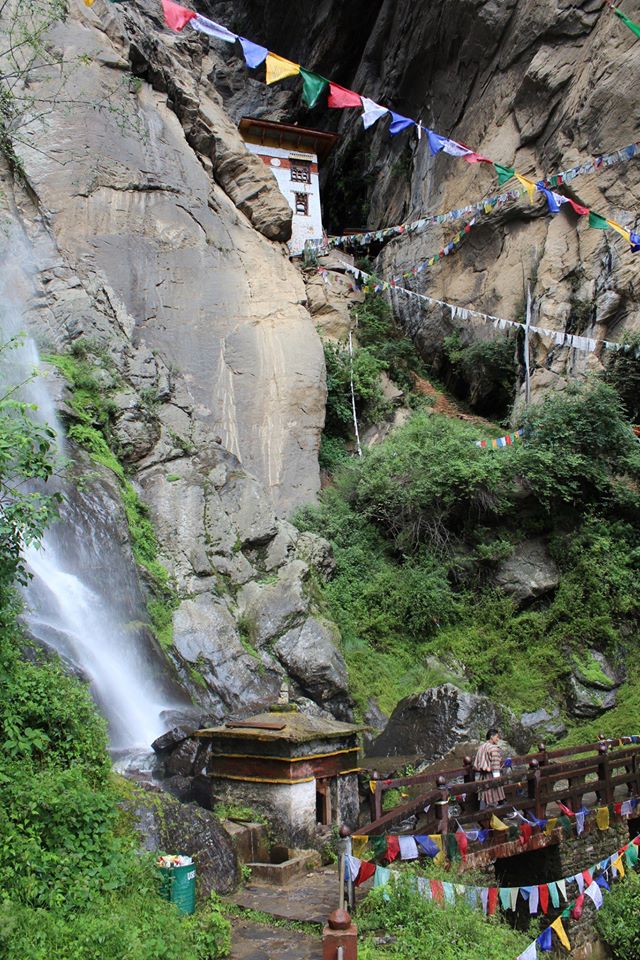
Waterfall and Singye Pelphu Lhakhang (Snow Lion Cave Meditation Retreat) near Taktshang Goemba (Tiger’s Nest Monastery)
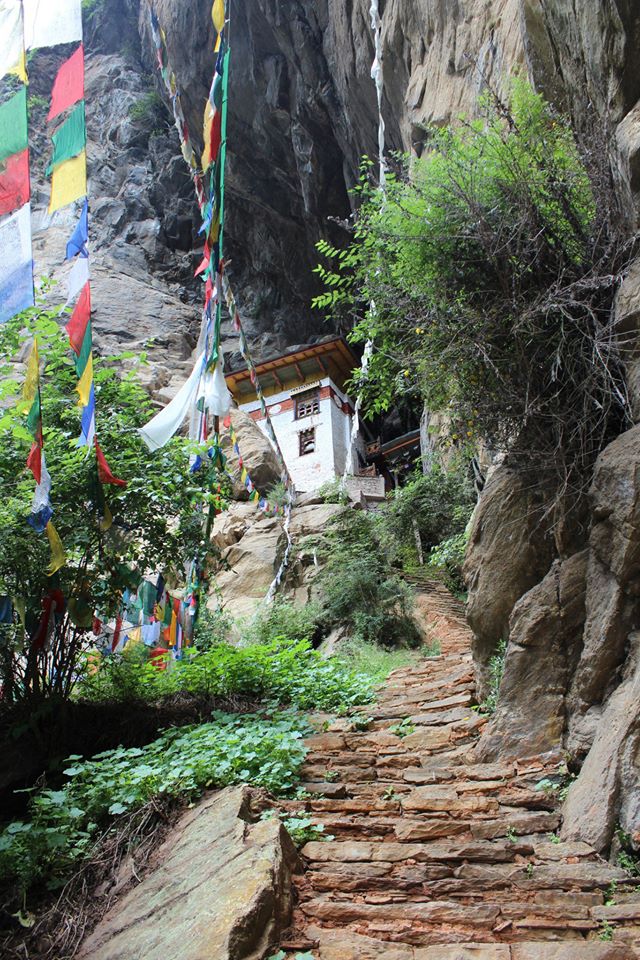
Steps to Singye Pelphu Lhakhang (Snow Lion Cave Meditation Retreat) near Taktshang Goemba (Tiger’s Nest Monastery)
Photography is prohibited in the monastery and a semi-formal dress code applies, so I checked my camera in to the reception and put on a collared shirt to view the interior. The monastery was built in 1692, and then rebuilt after being almost completely destroyed by fire in 1998. It was originally built to mark the cliff-top cave where the person who introduced Bhutan to Buddhism, Guru Padmasambhava, meditated for three months in the 8th century. How did he get up there, you ask? He flew there of course, on his winged tiger; hence the ‘Tiger’s Nest’ name.
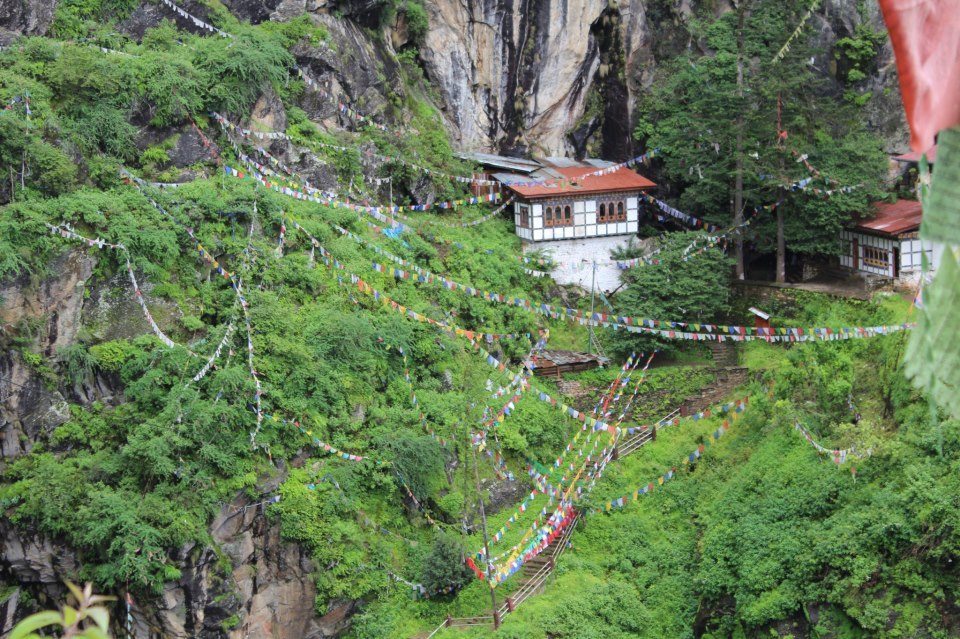
Monk’s quarters with prayer flags, below Taktshang Goemba (Tiger’s Nest Monastery)
Without the aid of a winged tiger, I was exhausted by the time I arrived, but the interior was more than enough refreshment. Inside the first chamber was the cave itself; small prayer lamps’ known as butter lamps, scattered around the room, illuminated the colourful deities around me. Offerings of food, drinks and money covered the small table inside, while brass sculptures of Buddha and Guru Padmasambhava guarded the walls, their faces shining gently in the flicking candle light. Other chambers in the monastery were equally spectacular – some of them austere but striking woodgrain, others a rainbow melange of materials, flowers and gravity-defying devotional cakes. After seeing most of the chambers I had caught my breath, but then it was time to descend. As we did, the rain started, and my guide hid my camera in his flowing gho (traditional Bhutanese robe) while we both ran for shelter.
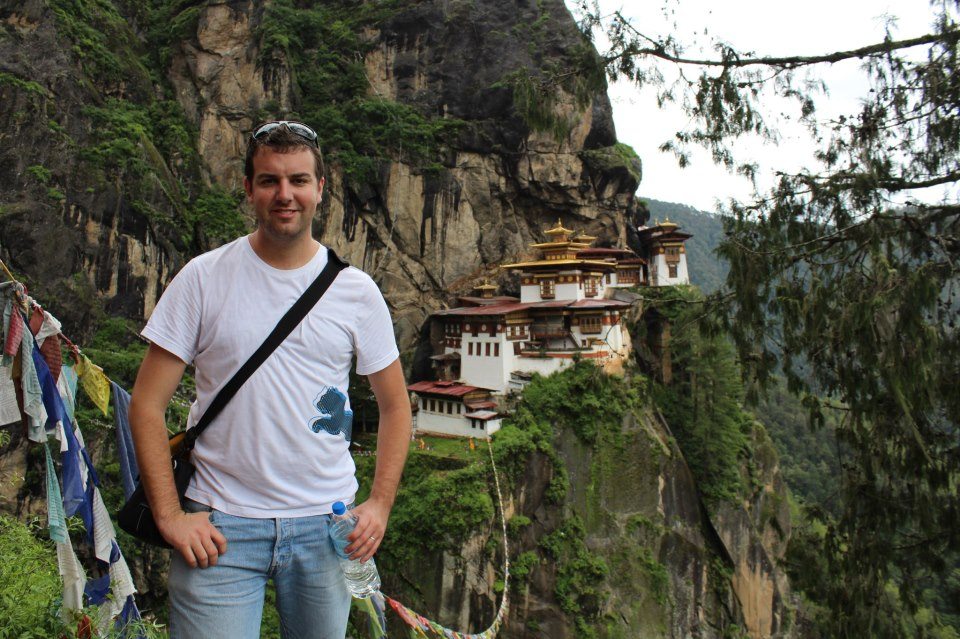
Me looking decidedly well-fed in front of Taktshang Goemba (Tiger’s Nest Monastery)
While we stood there, we got talking about Bhutan’s most famous trademark; Gross National Happiness. Next week I’ll write about that, and how it works for this astoundingly beautiful mountain kingdom.
When to go
Peak tourism period in Bhutan is from March to June, as the temperature climbs, and from September to November, after the monsoon recedes. July and August can be rainy, although not unpleasant, and December, January and February see the country covered in a blanket of snow – gorgeous, but very cold and some roads close.
Essential Stats
Culture shock: 8/10
Language difficulty: 4/10
Quality of food: 8/10
Cost: 9/10
Physical demand: 9/10
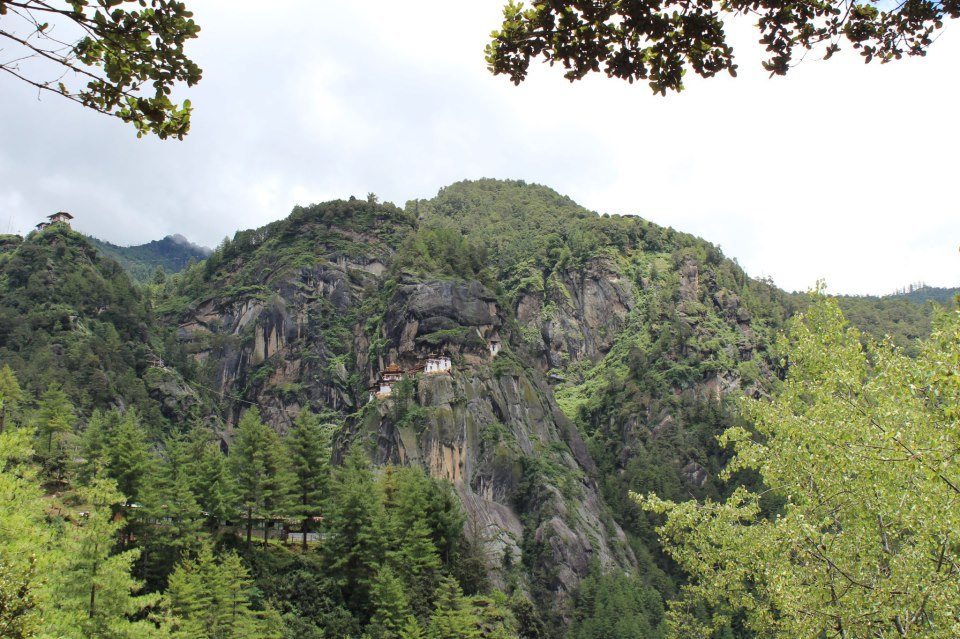
Taktshang Goemba (Tiger’s Nest Monastery) seen from the Paro Valley
Advice and warnings
Bhutan is an incredibly safe place in which to travel – the dangers posed by altitude sickness, hiking fatigue and avalanche far outweigh any potential crime or political unrest. That said, do keep an eye on your belongings just in case – this might look like utopia, but you’re still on planet Earth.
Check Smart Traveller or the British Foreign Office for more comprehensive warnings.
Visas
Australians and Pakistanis need a visa in Bhutan, but it is pre-arranged by the travel agency and then collected at Paro airport on arrival. I used the excellent and very friendly Phuentshok Tours and Treks, and would happily recommend them – they organised everything! The price and processing of the visa is worked out on the basis of length of stay.
Indians may visit Bhutan and obtain a visa on arrival, provided that their passport has a further six months of validity.
Getting there and around
No foreign airline regularly flies to Bhutan – only Drukair, which flies to a bunch of regional ports.
Melbourne and Sydney
For Australians the easiest option is via Bangkok. Drukair’s Bangkok – Paro flight costs US$799 return, inclusive of taxes. This will be organised along with the tour package. Drukair doesn’t have interline agreements with any other airlines, so you’ll need to disembark from your flight to Bangkok, collect your baggage and re-check in for Drukair onwards to Bhutan. Be sure to leave enough time – a day or two preferably.
THAI flies to Bangkok at least once daily from each of Melbourne and Sydney. All THAI flights arrive and depart from Survanabhumi International Airport (Bangkok’s main airport).
Melbourne (from $1079 return)
Sydney (from $1096 return)
Discount airline Air Asia flies from Melbourne to Bangkok via Kuala Lumpur from $513 return, while Sydney to Bangkok via Kuala Lumpur is from $547 return. Note that Air Asia uses Don Mueang Airport in Bangkok, the older airport which is now popular with discount airlines. Discount airline Jetstar flies directly from Melbourne to Bangkok with fares starting from $563 return. They operate into the main Bangkok airport at Survarnabhumi.
Lahore
Lahoris heading to Bhutan are best to transit through Kathmandu. Flights on Drukair from Kathmandu to Paro cost US$443 return. PIA flies from Lahore to Kathmandu via Karachi several times a week from PKR 59,067 return. Don’t forget to apply for a multiple entry Nepal visa from the Embassy of Nepal in Islamabad (from US$25).
Chennai
Indian citizens can fly directly from Kolkata to Paro from US$430 return. Indigo and Jet Airways fly from Chennai to Kolkata several times daily.
All transport in Bhutan will be organised as part of the tour.
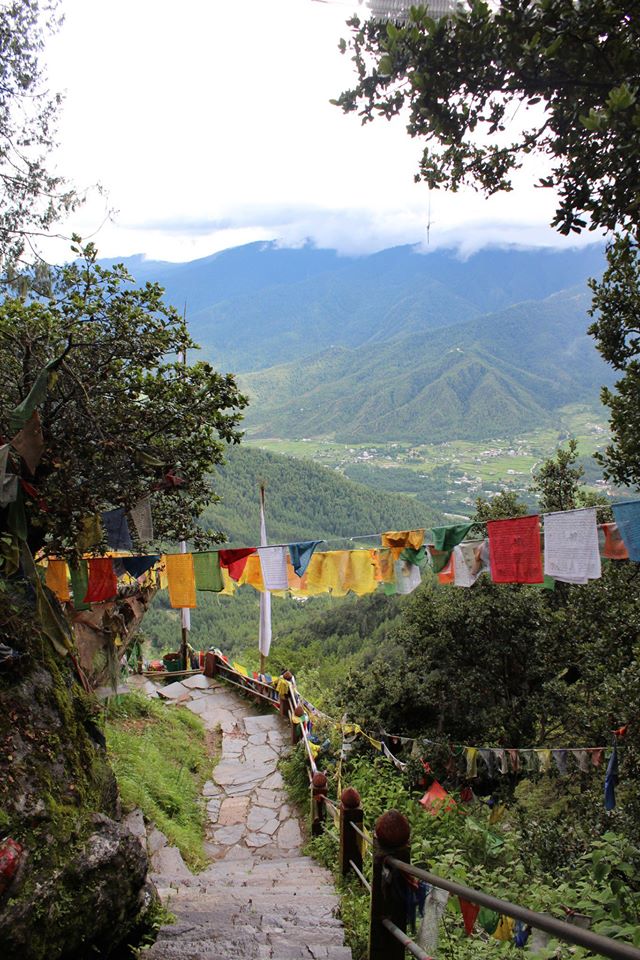
Paro Valley from the trail to Taktshang Goemba (Tiger’s Nest Monastery)

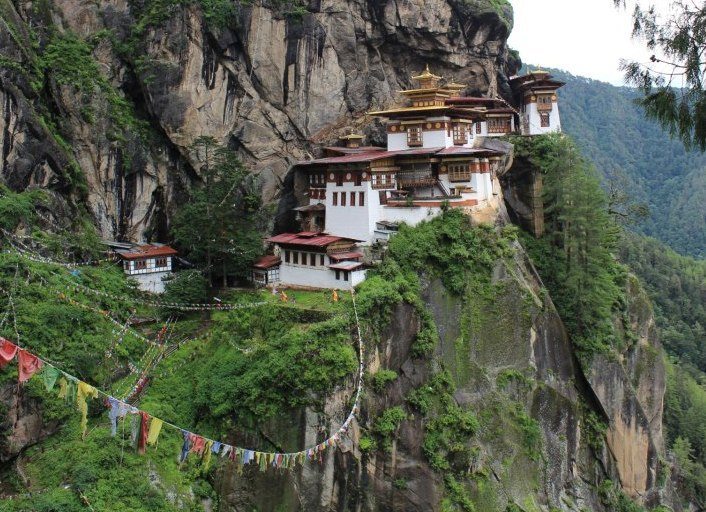



That is seriously GORGEOUS! While I’m sure the trek to the top was brutal, there’s something very special about only being able to reach it on foot…truly one of those travel memories that will always stay with you!
It was absolutely worth it – I even dream about it sometimes… there’s simply no way to describe it. I’m sure I’ll return one day… Thanks for stopping by, Jess 🙂
Wow, this monastery’s absolutely beautiful. How come I’ve never been here?!? That must have change! Is Bhutan an expensive travel destination?
Hey Agness! You MUST go there some time!! Yes, Bhutan is expensive – to keep tourist numbers low and preserve the local culture, every traveller must apply for a visa which is charged per day spent in the country. The price is a standard US$200 – US$250 per day, depending on the season – no discounts, no exceptions. So a four day visit will cost US$800 – $1,000.
On the other hand, the visa fee includes all of your transport, accommodation, meals and sightseeing, plus a cultural guide to translate or explain/organise things where necessary. It’s not like a typical ‘guided tour’, more like a travel companion who helps out. So while it is expensive, it can be ok value – especially if you are travelling long distances or staying in 5 star hotels (regardless of where you stay, it’s included in the $200 – $250 per day fee, so you might as well ask for the best!!).
While the price can be shocking, it’s worth remembering that it’s the price which stops Bhutan being overrun by tourists who are only half-interested in the local culture. Anyone who goes to Bhutan must REALLY want to go there, and when you visit places like this monastery, you are usually the only person there. THAT’S worth paying for!
wow. the adventure is certainly in getting there! awesome post sir!
Yup – the adventure is definitely worth it however – simply stunning!
u r rightfully the modern ‘Ibn Batuta’…….Keep it up
Awww thank you! That’s very high praise indeed 🙂